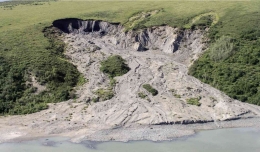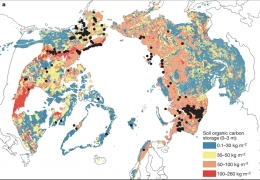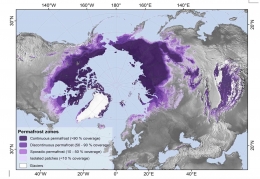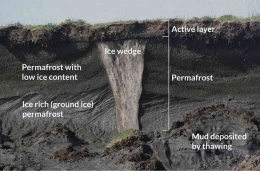With global temperatures warming, more and more permafrost ice sheets will melt and thereby release billions of tons of carbon deposits and methane contained in the frozen soil into the atmosphere. The carbon and methane that settled earlier will become food for soil microbes that come back to life after being buried and frozen in the permafrost ice sheet.
In this way, the residue from the carbon deposits will be released by microbes into the air in the form of carbon dioxide gas (CO2) and methane gas (CH4). Even though it is known that CO2 and methane gas are greenhouse gases that can exacerbate global warming if released into the atmosphere in large quantities.
That way, the melting of the permafrost ice sheet will accelerate the pace of climate change and global warming that humans are trying to slow down. This phenomenon is known as the climate feedback loop or climate feedback cycle.

The main feature that regulates the release of carbon from permafrost by climate feedback mechanism from the newly synthesized observations. (Schuur, 2015)
Explanation of picture above: Carbon stored frozen in permafrost when thawed, can enter ecosystems where conditions are predominantly aerobic (oxygen present) or soils that are predominantly anaerobic (oxygen-limited). Throughout the permafrost region, there is a gradient of saturated water sourced from mostly aerobic upland ecosystems to mostly anaerobic lowlands and wetlands.
In aerobic soils, CO2 is released by microbial decomposition of soil organic carbon, whereas CO2 and CH4 are both released from anaerobic soils and sediments. Microbial decomposition of soil organic carbon can occur at the surface of the active layer, which thaws each summer and refreezes in winter, and below the surface when freshly thawed carbon sediments are available for decomposition after emerging from freshly thawed permafrost.
Organic soil carbon decomposition varies across the landscape depending in part on plant inputs and the soil environment, and also on the depth of the soil profile. Gradual and sudden thawing processes such as top-down thawing of permafrost (increasing the thickness of the active layer) d can expose more carbon to aerobic conditions.
Otherwise, the sudden thawing process can create wetter anaerobic conditions as the soil surface recedes, drawing in local water. Carbon can also be mobilized by erosion. Plant carbon sequestration can be stored in increased plant biomass or stored at the soil surface, which can partially offset the loss of topsoil.
Knowing how much carbon will be released from the permafrost zone in this century and beyond is critical to determining the appropriate response. Yet despite the enormous amounts of carbon in permafrost soils, emissions from these soils are unlikely to offset emissions from burning fossil fuels, which will continue to be a major source of climate forcing (Schuur & Abbott, 2011).
The release of permafrost carbon will still be an important accelerator of climate change. After all, it takes place in remote places, far from human influence, and spreads across the landscape. And once the permafrost thaws, emissions are likely to continue for decades or even centuries.
















